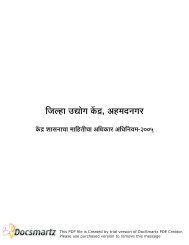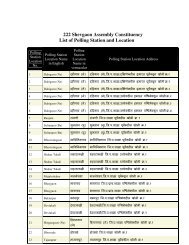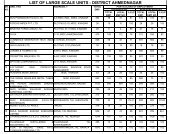1. INTRODUCTION
1. INTRODUCTION
1. INTRODUCTION
Create successful ePaper yourself
Turn your PDF publications into a flip-book with our unique Google optimized e-Paper software.
Depending on the nature of disaster and the type of damage, it may be necessary to set-up a<br />
number of relief camps and/or cattle camps.· In such a situation, the DDM may decide to<br />
set-up a Site Operations Centre to reduce the pressure on DCR for field coordination.<br />
Depending on the disaster locations and the number of camp sites, the DDM may decide<br />
to set-up more than one Site Operations Centre. The Site Operation Centre and the camps<br />
would be wound up after the relief and rehabilitation work is called off or after the relief<br />
camps and cattle camps are dismantled whichever is later.<br />
The Site Operations Centre will be managed by Site Manager of the rank of Sub-Divisional<br />
Officer/Deputy Collector.<br />
It may be noted that a coordinating structure of this type may have many areas of overlap<br />
with the DCR and therefore the activities need not be duplicated. The basic functions of the<br />
Site Operations Centre will be to facilitate communication and coordination between DCR<br />
and the camp sites.<br />
2. Relief Camps :<br />
Relief Camps would be set-up preferably on settlement lines and unless the disaster<br />
is a localised phenomenon, the DDM may decide to set-up as many camps as the number of<br />
villages affected. Also the size of the camp will be one of the considerations particularly in<br />
urban areas to decide on the number. The administrative structure for such relief camps<br />
responsible for direct service to “victims” is given in Table III. Each relief camp will be<br />
assigned to a Camp Officer, of the rank of Tahsildar. In some of the disasters, it may be<br />
necessary to set-up Feeding centres only for the victims.<br />
The DDM may agree to assign some such relief camps or feeding centres to willing<br />
non-governmental organisations (NGOs) with demonstrated capability and required<br />
manpower. However, such camps would also come under coordinating mechanisms<br />
established through Site Operations Centre/s or DCR.<br />
1) Encouraging Community Preparedness :<br />
Disasters may result in cutting off essential services and in spite of administrative<br />
preparedness it may not be possible for the administration to reach out immediately.<br />
Mitigation efforts and preparation of the disaster management action plan for local<br />
areas are essential elements and pre-requisites. Preparedness to a large extent would reduce<br />
the impact and the damage. Training and simulation exercises for enhancing the<br />
community’s preparedness and response capability will simultaneously strengthen and<br />
enhance the capacity of the administration to undertake necessary preparedness or<br />
evacuation measures. The district administration is encouraging and supporting initiatives<br />
towards community preparedness measures including formation of Community Emergency<br />
Response Teams (CERTs).<br />
On the basis of discussions, apart from the NGOs mentioned earlier, the following<br />
Private Sector units, Mahila Mandals and CBOs have been identified as resource groups for<br />
involvement in community preparedness measures. They will all undergo training for the<br />
C:\DOCUME~1\ADMINI~1\LOCALS~1\Temp\C.Lotus.Notes.DataRevised Grain Bank


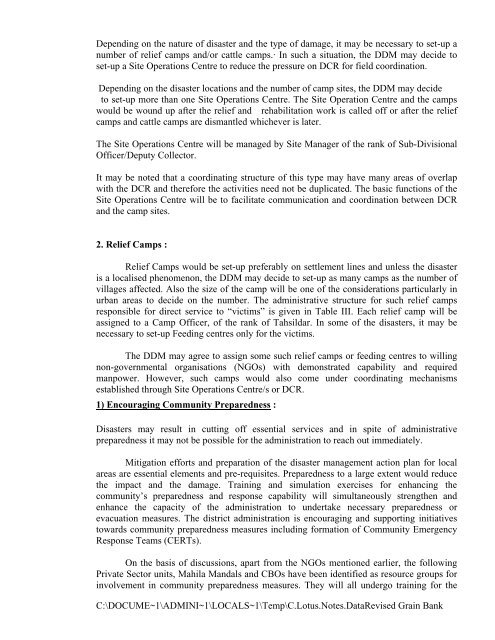
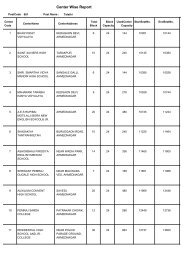
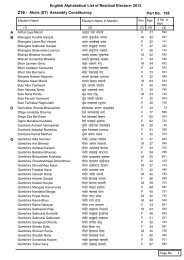
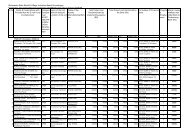
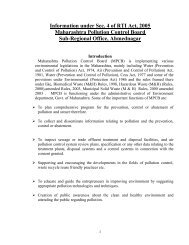
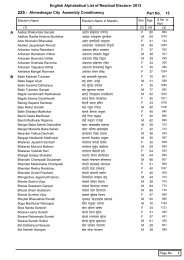

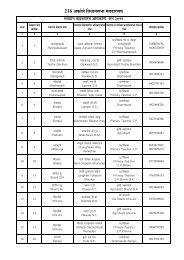
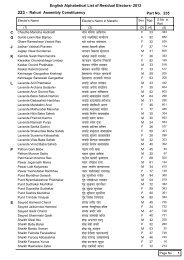
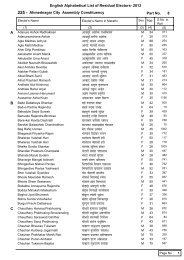
![216 - +ÃŪúÃä]äõ ĶÃŪúià ĶÃÃ>ðŪúÃÄ«Ã +ÃŪúÃä]äõ EÅÃÄÄ·ÃĪÃÃ](https://img.yumpu.com/36478022/1/184x260/216-aaaaaaau-aaaaia-aaaaaaaaa-aaaaaaau-eaaaaaaaa.jpg?quality=85)
